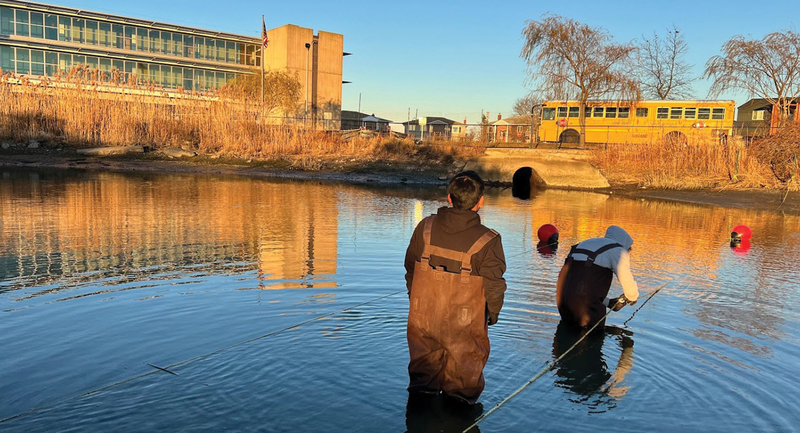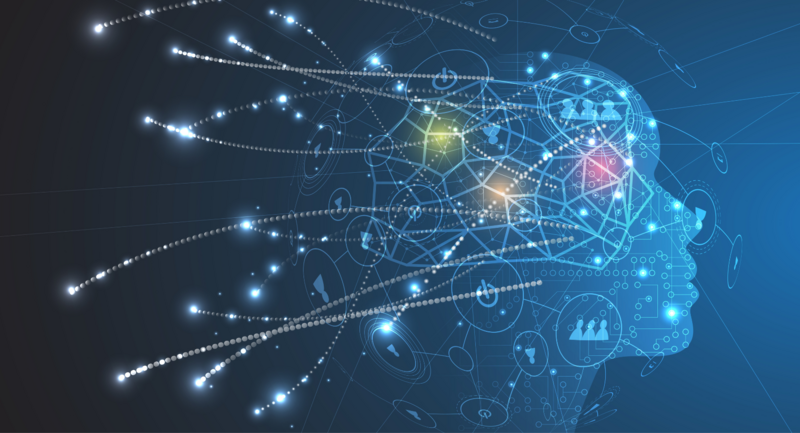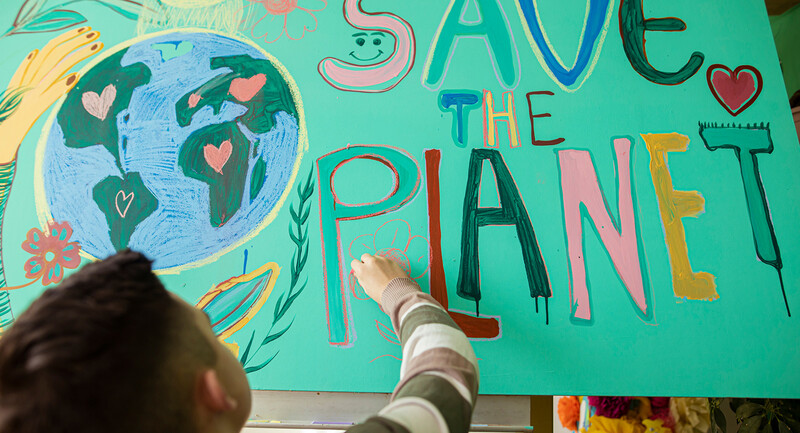Science texts often pose special challenges for inexperienced and struggling readers, particularly when those students are transitioning from the elementary to middle grades. These students may have trouble understanding how science information is displayed and organized (such as in figures, diagrams, graphs, and drawings); grapple with technical or specialized vocabulary to convey scientific ideas and concepts; and have difficulty understanding the syntactic structures used to express complex scientific processes and concepts.
Reading in Science—or Science in Reading?
In the last 30 or 40 years, many educators have proposed that content-area teachers "insert" reading strategies— such as teaching science vocabulary— into their content instruction. However, although teaching reading skills and strategies is worthwhile, knowledge of skills and strategies is only a small part of what makes an effective reader of science texts. Research indicates that science reading also requires discipline-specific background knowledge. Accurate knowledge of content prior to reading a text has consistently been shown to reliably predict text comprehension (Dole, Valencia, Greer, & Wardrop, 1991; Vitale, Romance, & Dolan, 2006).
Findings from a group of researchers in Hong Kong (Cheung, Tse, Lam, & Loh, 2009) indicate that it may be more effective to teach content-specific knowledge in the reading classroom. Looking at Hong Kong's substantial improvement in the Progress in International Reading Literacy Study (PIRLS)— its 4th graders moved from 14th among 35 participating countries in 2001 to 2nd among 44 countries in 2006— researchers found that the improvement was associated with significant changes to Hong Kong's reading curriculum. An important contributor appeared to be integrating the teaching of content subjects into reading instruction.
For example, reading instructors should familiarize students with the hypothetico-deductive logic ("If … then") that permeates effective science instruction. Focusing on scenarios in reading that follow this logic structure— even when if and then are not explicitly used—helps students follow this complex logic so common to science texts. In addition, science learners must often consider written thought experiments, projecting or comprehending outcomes based on prior information.
Consider this example that includes complex "if…then" logic as well as a thought experiment: Suppose we have a theoretical gas confined in a jar with a piston at the top. The initial state of the gas has a volume equal to 4.0 cubic meters, and the pressure is 1.0 kilopascal. With the temperature and number of moles held constant, weights are slowly added to the top of the piston to increase the pressure. When the pressure is 1.33 kilopascals, the volume decreases to 3.0 cubic meters. The product of pressure and volume remains a constant (4 × 1.0 = 3 × 1.33333). (National Aeronautics and Space Administration [NASA], 2008).
Note the use of the hypothetical (if a gas is confined in a jar and if the temperature and mass are held constant); the presence of the thought experiment (Let's add weights to the imaginary piston!); the deductive logic that follows from the hypothetical conditions (if those conditions are in place and if the weights are added, then the pressure will increase); and the outcome that the student is supposed to comprehend (Pressure Before times Volume Before = Pressure After times Volume After, or 4 × 1.0 = 3 × 1.33333). Making explicit to students the logic structures in use and helping them "unpack" paragraphs such as these facilitate understanding of the text.
Context Is Key
Within the science classroom, teachers can do much to enhance reading and improve science learning. We often neglect to teach domain-specific knowledge in our efforts to raise test scores, despite the fact that content knowledge is crucial if students are to understand and learn from science texts (Fisher & Frey, 2009).
The good news about science instruction is that all major reform documents in science education deemphasize memorizing vocabulary and relying on textbooks (McComas & Olson, 1998; National Research Council [NRC], 1996). Instead, students should learn fundamental science concepts—also called "big ideas"—in the context of doing science, while learning about what science is and how it works (American Association for the Advancement of Science [AAAS], 2002; NRC, 1996). Science instruction that focuses on memorizing vocabulary and using formulas to solve many identically structured problems is associated with a lack of conceptual understanding of science, an inability to use science process skills, and a decreased interest in pursuing science-related activities and careers (Schmidt, McKnight, Cogan, Jakwerth, & Hoang, 1999; Tobias, 1990).
We recommend a research-based approach that helps teachers organize classroom instruction in a way that enables them to teach reading skills and strategies in the context of science content knowledge.
Start with the Concrete
One of the central research findings on how people learn is that learners grasp concrete representations more easily than abstract representations. Concrete representations require fewer mental leaps on the learner's part.
Consider a spectrum of learning that moves from concrete to abstract. It begins with real phenomena on the left and becomes increasingly abstract as it moves to the right, through models, videos, photos, drawings and diagrams, graphs, tables and charts, and finally text. Moving from left to right along the spectrum requires more abstract thought to grasp meaning. For example, models in science differ from the real phenomena they represent because they lack proper size, scale, texture, color, and other features. A mobile-style model of an atom grossly distorts scale and size; students may wrongly think that electrons have a particular color, orbit on rings, or are "attached" to a nucleus by a physical object. Learners have to visualize how the model resembles the real thing and understand the important ways that the model differs from reality.
Video clips may capture much of the visual appearance and sound of a natural phenomenon but lack tactile access, distort size and scale, and have no smell or taste. With each move to the right on the spectrum, the sensory inputs that are available to students diminish; learners must make meaning through increased use of abstract thought.
When planning instructional science units, teachers make important decisions about how to represent concepts and the order in which the representations will occur. For instance, a teacher may begin a science unit with a reading selection, video clip, K-W-L chart, model, or short field trip to make observations outdoors. Not all of these options are equally effective, however. What the teacher chooses, and in what order, will affect how well students learn.
The Learning Cycle
Decades of research in science education indicate that students learn better when teachers begin instructional sequences with more concrete representations, scaffold toward more abstract representations, and then return to concrete experiences (Brown & Abell, 2007; Lawson, 1995). A powerful instructional model that follows this concrete/abstract/concrete sequence is called the learning cycle (see "Resources About the Learning Cycle," p. 60). Also known as guided inquiry (Colburn, 2000), the learning cycle has a long history and is superior to other models in helping students deeply understand science concepts (Brown & Abell, 2007; Karplus & Their, 1967; Masheno & Lawson, 1999; Purser & Renner, 1983).
Exploration: Students are presented with a challenge question to explore, a phenomenon to observe, or some other guided experience. For example, the teacher might give students a battery, a bulb, and one wire and ask them to find as many ways as possible to light the bulb with those materials. The purpose of this phase is to provide students with focused, concrete experiences with the phenomenon.
Concept Development: Students discuss with one another and with the teacher their observations, questions, and possible explanations. The teacher uses students' ideas to pose additional challenges to clarify their thinking, moves students' thinking from the concrete to the abstract through discussion and introduction of concepts, and provides appropriate terminology for concepts. For example, after lighting the bulb, students could draw the configurations that worked on the board. The teacher could help them identify required points of contact and introduce the concept of a circuit.
Application: Students use their new ideas in a more complex setting—to solve a new challenge, test ideas, and so forth. This phase helps students see the utility of new ideas, reinforces concepts, and expands the application of the concept beyond the initial experience. For example, to broaden students' experience with the battery, bulb, and wire, the teacher might give students two batteries, two bulbs, and multiple wires and ask them to set up two systems: In one system, both bulbs light up, but when one bulb is removed, the other goes out; in the second system, both bulbs light up, but when one bulb is removed, the other remains lit.
The learning cycle is appropriately called a "cycle" because the application phase may become a new exploration phase, and an instructional unit may consist of a series of cycles, each progressively more complex and building toward an understanding of a big idea in science. For example, once students have set up the two systems with the bulbs, the teacher might have them draw the configurations that work on the board; together they might note the differences between the two systems. After identifying these as series and parallel circuits, the teacher might ask students to discuss familiar circuit systems (such as classroom lights) and speculate about whether they are wired in series or parallel, supporting their ideas with evidence.
A Lesson on Momentum
To illustrate how a single science unit moves between representation types, we analyzed a videotaped sequence of lessons in a 1st grade teacher's unit on momentum (Detroit Public Television & Mort Crim Productions, 2003). The teacher began the unit by having students discuss their experiences sledding down a hill. (Ideally, students would have been outside, trying to determine how to win a sledding race.) She then had students roll balls down ramps and record the time the ball took to roll down on a chart. They experimented with ramps with higher (that is, more steeply inclined) and lower starting points. Even in this early phase of the instructional sequence, students were working toward the concept that speed increases when the release height is increased.
Students summarized their observations by drawing a side-view sketch of the ramps and ball on 1-inch-grid graph paper. Below the sketch, they wrote a sentence summarizing their findings. One student wrote, "The lower the ramp, the slower the ball goes." The teacher spent time in language arts teaching students descriptive words, such as higher, faster, slower, and taller.
In addition, the students investigated whether a ball colliding with an object (a can) placed at the bottom of the ramp could move the object and, if so, how the students might get the object to move as far from the ramp as possible. They experimented with a variety of ramp heights and conducted multiple trials. At the conclusion of the trials, they hung their papers across the white board at the front of the classroom. The teacher then helped students summarize their findings and interpret their data, helping them see that the taller ramp resulted in the ball moving faster and that the fastest-moving ball could move the can the farthest.
In this example, the teacher began with real experience (the students' experiences with sledding); moved to a model (the ramps); then to a chart (the record of time); then back to another model (ramps with different steepness); to a drawing; to text (summary sentences); to another, more complex experience with a physical model; to a graph; to another drawing; and finally—to text. In the lesson, the teacher carefully sequenced each experience to form a larger concept—a big idea about how speed, force, and mass are related to one another (even though the word mass wasn't formally used in the lesson).
The teacher will introduce vocabulary terms such as mass, momentum, and force when students are developmentally ready for them. These terms are not the focus of the unit; the focus is on the relationships among real objects. Students learned that faster objects exert more force on other objects and that to increase the speed of an object, they should increase the release height.
The same principles apply with older students. For example, teachers should begin chemistry lessons with visible phenomena whenever possible—such as showing a chemical reaction—and then introduce models to illustrate what is occurring at a molecular level, gradually working toward symbolic representations, such as chemical equations and text. Science is, after all, a study of natural phenomena. Students need to make this connection for optimal learning to occur.
Which Comes First?
Teachers familiar with the reading–lecture–lab order of instruction so common in secondary and tertiary schools will see the learning cycle as backward—because the laboratory experience comes first. But when we consider how scientists develop knowledge, we can see that the learning cycle, not surprisingly, follows this sequence: Scientists observe phenomena, work to develop explanations for those phenomena, and only assign vocabulary to new ideas late in the process to make communication easier. So, putting reading or lectures first is backward; it doesn't fit how people learn or how scientists do science.
That said, simply having students closely observe a phenomenon does not mean they will develop complex science ideas. The teacher needs to help them make sense of experience and to introduce concepts and terminology when students are ready for them. In addition, most published laboratory activities are not in a format that makes them well suited for students in an initial exploration phase.
Many laboratory activities need to be modified so that students gain experience, make predictions, observe phenomena, or test ideas so that rich discussion and concept development can follow. This often means giving students a basic experience with a phenomenon, discussing ideas and introducing small parts of the concept, returning to another experience at a greater level of complexity, introducing more parts of the concept, and so on, until students have grasped central ideas.
Looking At—and Understanding—Data
Modes of representation—such as graphs, tables, formulas, charts, diagrams, figures, and drawings—have particular advantages for promoting understanding of science concepts. Teachers should encourage students to record data and compare the many ways of doing so, listing the advantages and disadvantages of each.
For example, students will quickly see that charts enable quicker scanning of results and a more rapid display of patterns than text does. Graphs can show trends more pictorially than a chart, which often relies on numbers. So students can scan a graph and usually note magnitude differences more quickly than they can with a chart.
Helping students navigate these representations not only promotes better understanding of the science content, but also provides important insight into science itself. Scientists function in environments that use symbol systems to represent natural phenomena. In chemistry, for instance, students learn many forms of these representations, including molecular models, Lewis dot structures, and chemical formulas and equations. Helping students move among representation types, connecting to real-world examples and noting how different formats convey the same information, is beneficial for student learning (Sullivan, 2006).
When students use an abstract representation, the teacher should ask them to explain what it means, draw what the representation might look like, or represent the concept using some other, more concrete format to ensure that students understand what the abstraction represents and that they haven't simply memorized the information.
Because science text is an abstract representation, students are less likely to learn science concepts from reading text if they have not had prior concrete experiences and appropriate concept development. However, when students have had a rich learning cycle sequence, which includes concrete experiences, they will be able to tackle science text with greater success. Students will have had experiences with phenomena; represented data using drawings, charts, formulas, or graphs; and worked with ideas in additional concrete ways. When they approach the text late in the instructional sequence, these conceptual structures will already be in place. The text can provide additional examples, illustrations, and reinforcement of concepts.
What Leaders Need to Do
Supporting teachers in their efforts to teach science and improve reading comprehension often means focusing on the big picture. The key to improvement lies in better instructional sequencing and better sense-making in class, rather than in inserting reading comprehension strategies that are devoid of context and focused on memorizing vocabulary.
Science texts have not fared well in recent analyses (AAAS, 2002; Abd-El-Khalick, Waters, & Le, 2008; Hubisz, 2003; Newport, 1990). The texts often reinforce ineffective pedagogy by focusing on bold-faced words, using illustrations that grossly distort scale and other central features of phenomena, including "practice problems" that value low-level factual recall and vocabulary recognition, and using formulas to solve lengthy problem sets that can be worked out without conceptual understanding.
Science texts rarely provide a sense of purpose, take into account students' ideas, engage students with relevant phenomena, develop fundamental scientific ideas and distinguish them from factual details, or promote student thinking. Consequently, teachers should not rely on the textbook as the primary source of knowledge in the course, nor should such materials dictate the pedagogy that teachers use.
In 1891, Oliver P. Jenkins, professor of physiology and histology at Stanford, highlighted this notion when he wrote, If this or any other … textbook [in science] is used simply as a book to be learned and recited, the time spent on it is worse than wasted. The terms used in the description of the parts of the body and their actions cannot have their proper meanings unless the real objects are seen. To attempt to cram children's minds with terms which to them stand either for nothing, or for vague conceptions wholly different from those for which the terms have been chosen, is doing the children a great injury. (p. 3)
Education leaders play an important role in selecting curriculum materials that promote effective science instruction. They should support teachers in making instruction focus on big ideas rather than on the recall of isolated details and in using experiences at the beginning of the instructional sequence rather than only at the end. Students should be thinking through important science ideas, testing their existing notions, and working with data. Reading should support, not define, the education process.








